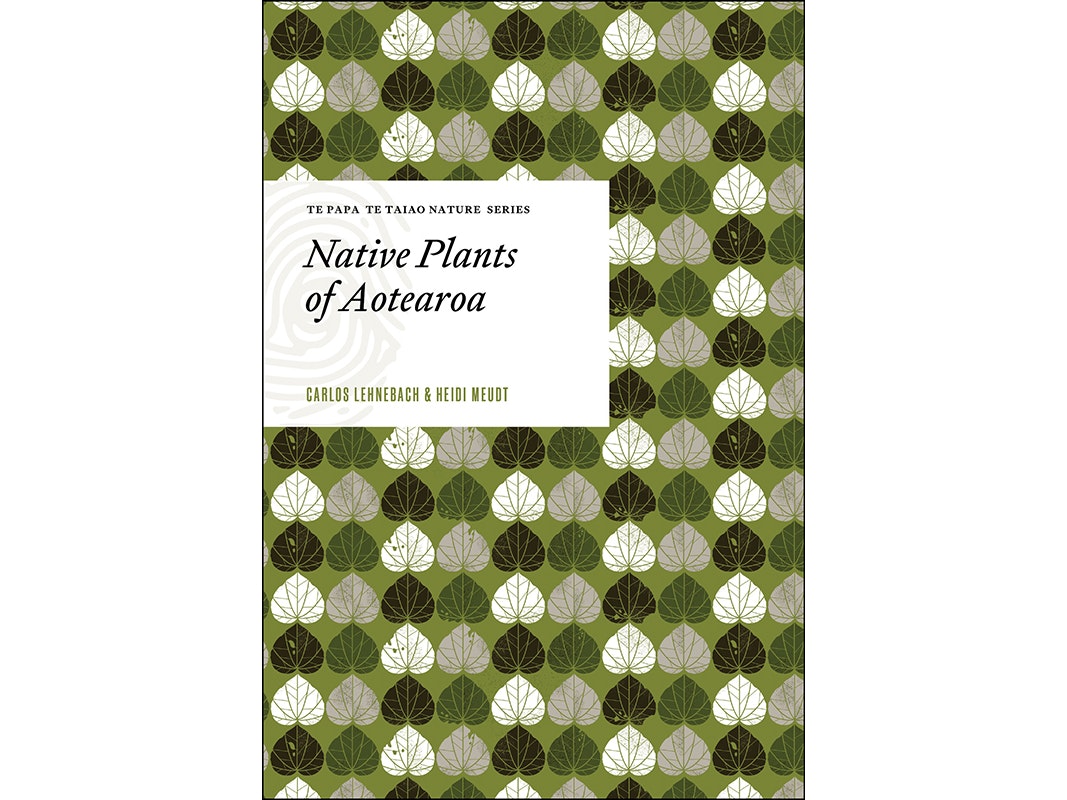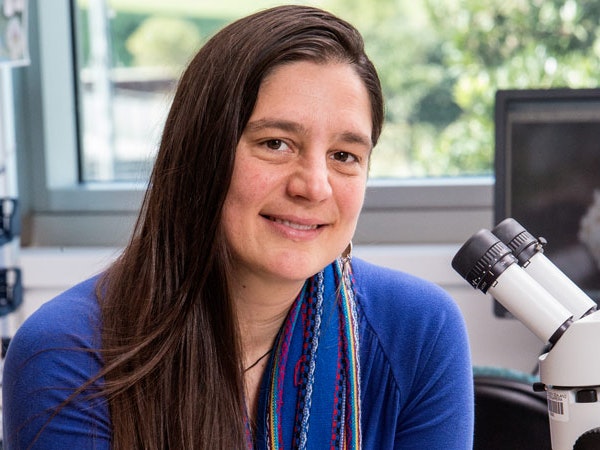
Te Papa Te Taiao Nature Series: Native Plants of Aotearoa
A handy introduction to the unique flora of Aotearoa New Zealand, for the backyard, bach, and backpack.
Free museum entry for New Zealanders and people living in New Zealand
Open every day 10am-6pm
(except Christmas Day)
Free museum entry for New Zealanders and people living in New Zealand
Heidi Meudt and Carlos Lehnebach discuss Native Plants of Aotearoa with Te Papa Press.
Dr Carlos Lehnebach is a Botany Curator at Te Papa and studies the diversity, evolution and conservation of New Zealand flowering plants. His main groups of interest are terrestrial and epiphytic orchids, alpine plants, and plants shared with other land masses in the Southern Hemisphere. His current projects aim to describe the New Zealand orchid flora and develop methods to assist the conservation of rare and threatened plants.
Dr Carlos Lehnebach. Photo by Te Papa
Dr Heidi Meudt is a Botany Curator at Te Papa. Her current is a researcher whose collections-based research focuses on the evolution and classification of native New Zealand flowering plants, especially forget-me-nots (Myosotis). Her research aims to update the taxonomy and conservation status of all native forget-me-nots. She also studies native foxgloves (Ourisia), plantains (Plantago) and hebes (Veronica) throughout the southern hemisphere.
Dr Heidi Meudt. Photo by Te Papa
HM: No, unfortunately it is quite common for people not to even ‘see’ the plants around them. There is a term for this: ‘plant blindness’, and it happens in other places too. Plants are the unsung heroes of our world, providing food, oxygen, medicines, shelter, clothing, fuel, aesthetics and many other benefits to people, animals and other plants, in both natural ecosystems and urban areas. It is therefore a wonderful thing when we start observing plants and learning the stories behind them, because we deepen our connection and relationship with the natural world around us.
CL: No. Somehow our connection with the natural world, and plants in particular, has been lost. With this loss, our ability to distinguish between different plant species and recall their names, properties and uses has gone.
HM: Start in your back yard, neighbourhood, botanic garden or local nature reserve. What catches your eye? Perhaps a colourful flower, a huge tree trunk, or the shape of an individual leaf. Then make some notes, make a drawing, or take a photo and upload it to iNaturalist.org to find out its name. Taking an active approach – writing, drawing, photographing – will help you remember its name, and what it looks like. Get a good hand lens so you can see the important features on plants, some of which can be quite small.
CL: Take a one-minute break and find any plant growing near you. Get up close and personal so you can see the intricate patterns, shapes and colours of their leaves and flowers. No plant growing near you? Have a look at your fruit and veggies instead, and think what part of the plant is this? Where is this plant native to? When did people start to cultivate it?
HM: I actually learned quite a lot in writing this book! For example, the tiny bead plant was once a food source for giant moa, which shows that even small, inconspicuous plants are an important and integral part of the ecology of our native bush.
CL: That glassworts (Salicornia) were used in glass making! The plants were collected and burned, then its ashes collected, soaked in water, strained and boiled. What is left after the water has evaporated is soda ash, which is used in the glass-making process.
HM: It’s just too hard to choose only one! Right now I am enamoured with native New Zealand forget-me-nots (Myosotis), many of which are threatened or at risk. They are small, often inconspicuous, delicate, rare, and only found in certain locations and habitats. This means doing the field work to find and study them is very challenging, but also extremely rewarding when we are successful.
CL: Orchids. I just love their seemingly endless diversity of shapes, sizes, colours and habitats. Equally fascinating are the many tricks they have evolved to attract their pollinators and ensure fertilisation of their flowers without offering a reward (nectar) for this service.
HM: Probably the national tree of Chile, Araucaria arucaria, or monkey puzzle tree. My family and I have been fortunate to see them in their native habitat in southern Chile. The shape of the tree, and its leaves and cones, is uniquely beautiful.
CL: This would be pua o te rēinga (Dactylanthus taylorii), a plant unique to Aotearoa New Zealand. Its common name translates to the ‘flower of the underworld’. This plant does not have leaves nor roots and it does not produce its own food. Instead, it steals the food produced by a neighbouring tree by attaching to the tree’s roots. The plants and flowers are almost buried in the leaf litter and are pollinated at night by the pekapeka (short-tailed bat).
HM: I have the tiny forget-me-not, Myosotis spatulata, growing in my backyard, which I’m very proud to say has survived there for several years now. I also have quite a few other natives that are found in this book, including the native passionflower, kākābeak, creeping pratia, kawakawa, five-finger and kōwhai! I have planted all of these myself.
CL: I live right next to a forest park so I’m surrounded by native plants, including a few orchids!
HM: I’ve been fortunate to have done field work throughout New Zealand, from Auckland to Stewart Island. Probably my favourite trips have been to very remote, mountainous areas of Fiordland, and the forests of Stewart Island.
CL: The mountain tops of Kahurangi National Park in the South Island.
HM: That’s a difficult question! In addition to botany, I also love languages, international travel and meeting people from other cultures, so perhaps I’d be a teacher of Spanish or English as a second language, or open a B&B somewhere with my husband, who is a great cook.
CL: Still a scientist. Perhaps a marine biologist or archaeologist.
HM: Get involved! Find out which local nurseries or other organisations supply native plants, and plant some in your backyard or local school. Join a group or event in your neighbourhood dedicated to plants or birds. It might be a local Predator Free trapping group, botanical society, or community tree-planting event.
CL: Learn to identify weedy plants that are taking over the habitat of our native species so they can pull them out and chuck them in the bin!
HM: That our native plants are unique, beautiful, worth knowing and fighting for, and have many stories to tell us. And that they are just as amazing and special as our iconic native birds, bats, glow worms and tuatara!
CL: I hope readers will be able to identify some of our native species and share the stories of their discovery, quirkiness and properties with whānau and friends.

A handy introduction to the unique flora of Aotearoa New Zealand, for the backyard, bach, and backpack.

